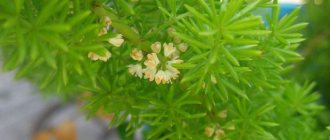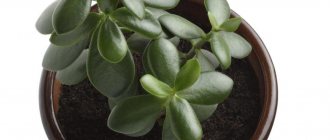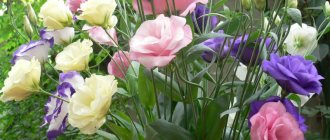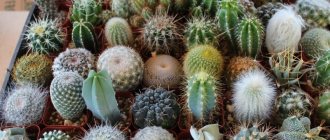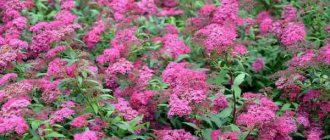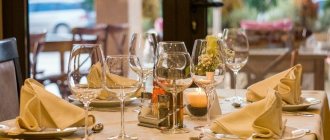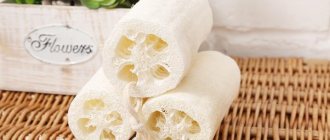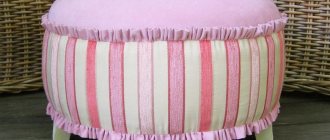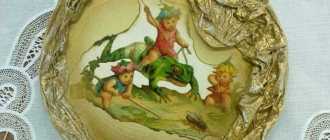- October 16, 2018
- Houseplants
- Lyudmila Sinitsyna
Kalanchoe is one of the most popular indoor plants. It is used in folk medicine and is called a house doctor. A large number of different species are known. The question often arises about what medicinal Kalanchoe looks like. What conditions must be created for its normal growth? What can be done to prolong the flowering of certain types of Kalanchoe? What should you consider when propagating a plant?
Description
There is often controversy about what the Kalanchoe plant looks like. The fact is that this genus has about 200 species, it amazes with its diversity. They differ in size. These can be huge plants up to four meters high or graceful bushes barely reaching 20 cm. Not only the size of the leaves varies, but also their shape and color: from rich green to almost blue. Differences also relate to the structure of the stem, shape and color of flowers.
Properties of Kalanchoe
The Kalanchoe plant has a wide range of medicinal properties and is widely used in medicine and cosmetology. The most famous and significant medicinal properties of Kalanchoe:
- stops bleeding;
- stops the inflammatory process;
- used to combat certain dental diseases, for example stomatitis;
- fights acne, psoriasis, eczema;
- helps with varicose veins;
- used in the treatment of many gynecological diseases;
- used in the treatment of runny nose;
- helps with burns or frostbite.
Despite such extensive medicinal properties, before treating with the Kalanchoe plant, you should consult a doctor.
Types of indoor Kalanchoe
Several species are especially popular in indoor floriculture. Each of them can become a real decoration of any room. You can see what Kalanchoe looks like when it blooms further in the article. All plants can be roughly divided into flowering and non-flowering species.
Kalanchoe varieties that do not bloom:
- Felt.
- Laciniata (dissected or lobulated).
Flowering species of Kalanchoe:
- Blossfeld.
- Beharskoe.
- Fiery.
- Terry.
- Bryophyllum.
- Tube-flowered.
- Rosaline.
Both are popular. In addition, all plant varieties are classified into decorative and medicinal. The latter include, in particular, Kalanchoe Degremona and pinnate. Each plant is beautiful in its own way. To decide which one to prefer, you need to know what Kalanchoe looks like. Photos along the text will help.
Kalanchoe: choosing a flower
About 200 species of Kalanchoe grow in nature, but only a few are grown at home. The plants are very different: some grow 3-4 meters, others are low, 15-20 cm. There are bright species that impress with spectacular flowers. And there are those that will delight you with cute, but barely noticeable bells. Two species are considered medicinal - degremona and Kalanchoe pinnate.
The famous ornamental plant Kalanchoe Blossfeld - its flowers are collected in inflorescences in the form of umbrellas. In nature they are red, but varieties have been created with orange, white, yellow and pink tints. The Kalandiva species is valued for the beauty of its blooms. The difference is double flowers of various colors. Other flowering subspecies include mangina, rosalina mix, rhombopylosa, and bejar.
Growing at home is also popular with Kalanchoe, which is a non-flowering species. Among the unusual varieties is the marbled Kalanchoe, which has striped leaves and snow-white flowers. “Cat ears” also look unconventional. This is what the people called felt Kalanchoe.
Blossfeld
Kalanchoe Blossfeld is one of the most common Kalanchoe species in indoor floriculture. You can find out what the plant looks like by looking at the photo. This is a very compact Kalanchoe, no more than 30 cm in height. The leaf blade is rounded, with jagged edges. There are varieties with a thin red line along the edge. The plant blooms from the beginning of winter until the end of the spring season.
Kalanchoe dwarf
Dwarf Kalanchoe (Kalanchoe pumila) is another type of plant with erect, and over time, drooping stems. The upper part of the leaf has uneven teeth. The flowers are large, purple-pink. A low shrub, up to 20 cm in height, fan-shaped leaves with a wavy edge when young are dark green in color, wedge-shaped, up to 4 cm in length and 3 cm in width, green with a powdery (bluish-waxy) coating, later they turn purple or brown. The total height of all adult shrubs does not exceed 25-30 cm.
The Pumila variety (the most common dwarf variety) from the central regions of Madagascar is a dwarf among other Kalanchoe species. The shoots, which initially maintain a vertical position, droop as they grow.
Kalandiva
This subspecies of Kalanchoe Blossfeld stands out among the others for its beautiful flowers, long-lasting and abundant flowering. The plant is very decorative at any time of the year. It has leathery leaf blades of a beautiful green color. In the photo you can see what Kalanchoe Kalandiva looks like and, using the knowledge you have gained about care, grow a flower. In the spring, the plant is literally covered with a cap of buds. The flowering period is long. When creating optimal conditions for the plant, you can admire such a “bouquet” for six months.
Collection and storage of Kalanchoe
Before picking the leaves, it is necessary for the flower to accumulate nutrients. Therefore, you need to not water the plant for a week, and then carefully cut off the required number of leaves, from which the juice will be made. Then the leaves need to be washed and chopped. Infuse in a dark place for 5 days. After using gauze, squeeze out the juice and add medical alcohol in a ratio of 1 to 5, then keep the resulting tincture in the refrigerator. With proper storage, the shelf life of raw materials remains for a year.
Kalanchoe is considered not a picky flower, and with proper care it will not only delight you with its blooms, but also heal the whole family. So this is a wonderful reason to start growing this beautiful flower on your windowsill.
Flower of Life - video
Read about Echinacea and its beneficial properties here.
Mangina
This type of Kalanchoe is also called African bells. In its natural environment, the plant grows only in Africa. The inflorescences resemble bells. Flowering begins at the very end of spring. The stems are flexible, thin, the leaves are oval and small in size. Overall a fairly compact bush.
You can find out what this variety of Kalanchoe looks like by looking at the photo above. In nature, you can find specimens with pink, orange, and red flowers.
Cirrus
Beginning gardeners often ask the question of what Kalanchoe pinnate looks like. It is distinguished by more complex leaves, which can be bright green, light green, or purple. In nature it grows up to two meters in height; in indoor conditions the dimensions are certainly more modest. Drooping large flowers have a purple or rich red hue.
Degremona
Degremona is the most popular variety, which is known to almost everyone. The plant is loved by gardeners due to its unique medicinal properties. This type of Kalanchoe has oblong, dense, leathery leaves. A distinctive feature of the variety are the babies (brood buds), which are located along the edges of the leaf blades. This species is also called viviparous, because the babies fall off and, falling on the soil, take root. Interested to know what medicinal Kalanchoe looks like? The photo is presented above.
Description of Kalanchoe Blossfeld
Blossfeldiana Kalanchoe (Kalanchoe blossfeldiana) is a perennial herbaceous succulent flowering plant, a species of the genus Kalanchoe (Kalanchoe) of the Crassulaceae family. Found wild in Madagascar. A beautifully flowering houseplant popular among florists. It is an erect, branched shrub about 30 cm high. The leaves are large, have wavy edges, sometimes with a red border. The natural color of the flowers is bright red.
This flower received its name in honor of the breeder Robert Blossfeld, who first brought this flower to Europe in 1925. It is one of the leading potted crops in Europe, mainly in Denmark, Holland, Germany and Switzerland. An undoubted advantage for growers is the ability to cause flowering at any time of the year, which is especially appreciated in the winter months.
The plant initially turned out to be harmful and did not take root well in European climatic conditions. But Danish and Dutch breeders got involved in the matter. Their brainchild was able to boast more noticeable leaves, larger and brighter, and more shades of flowers. Kalanchoe Blossfeld does not require any special care, watering is standard, and the soil needs of this flower, like other succulents, are small.
Features of care and temperature conditions
Kalanchoe does not require special growing conditions; it easily adapts to different indoor microclimates. But it’s still better to create an optimal growing environment for it. After you bring home a new plant, think about where it is best to put it. A child of the tropics, Kalanchoe loves sunlight, but direct rays can burn the leaves. Flower growers recommend leaving the plant in the sun from morning until lunch, and then shading it a little. What does a Kalanchoe flower look like? The photo is presented in the article.
Frequent ventilation is required, but a cold draft can seriously harm Kalanchoe. The plant can easily tolerate heat, the best temperature in summer is +20...+25 °C, but in winter you need to make sure that it is not colder than +15 °C, otherwise it may get sick and die.
In summer, the plant can be taken out onto the veranda, into the garden, onto the balcony and brought in only during fog and rain. In the article you will see what the flower looks like in the photo. Kalanchoe medicinal, or Degremona, is familiar to many, but species such as tomentose Kalanchoe or tubiflora are rare in our houses and apartments.
Proper watering and fertilization
Overmoistening is dangerous for Kalanchoe. If there is too much moisture, the roots may rot and dangerous diseases will develop. Therefore, it is important to observe moderation and know the rules of watering.
In summer and spring it should be moderate. The soil should dry out between waterings. In autumn and spring you need to reduce the amount of water; one watering every 14 days will be enough. During the cold period, you need to make sure that the water does not stagnate in the pan, this can lead to hypothermia of the plant, and it does not tolerate this well.
At any time of the year, experts recommend using settled water at room temperature. Be sure to ensure that liquid does not get on the stem, otherwise it may rot.
Kalanchoe does not require frequent feeding. In winter there is no need to do this at all. If you purchase ready-made fertilizer for succulents, half the dose indicated on the package is enough. The drug is dissolved in warm water, then the solution is cooled to room temperature and the plants are watered with it.
Transfer
The root system of the plant develops quickly, so replanting is required regularly. It is better to select containers with a wide diameter and deep enough. Plan to replant in the spring, when the plant is just starting to grow. Sometimes an urgent transplant is required if the roots begin to rot. Each time, choose a pot 3-4 cm in diameter larger than the previous one, and add drainage to the bottom. The soil should consist of a mixture of turf and leaf soil in a ratio of 3 to 2. During replanting, you need to handle the stems more carefully, they are fragile.
How to care for Kalanchoe at home?
The plant is unpretentious in care and can be easily grown at home. Home care is the same for all types. Having purchased a plant, you should know how to care for Kalanchoe at home so that the plant blooms with bright flowers and pleases the owner’s eye.
Any place where there is some sunlight is suitable for the plant.
If the plant is exposed to direct sunlight, the color of its leaves will change and a slight redness will appear.
In winter, flowering plants require additional lighting.
If the plant does not have enough light, it weakens and elongates. The lower leaves die and the upper ones turn pale.
The optimal temperature for the plant in summer is 23–25ºС, and in winter -12–16ºС. If the air temperature outside the window is above +10ºС, the plant can be taken out into the fresh air (balcony). Kalanchoe copes with the heat, however, at this time the amount of watering should be increased.
How to water Kalanchoe at home? The plant accumulates moisture in the leaves. Therefore, overwatering is detrimental to the plant. Watering should be done so that the water completely wets the ground; the excess should be drained.
By choosing the correct frequency of watering, you can avoid flooding the plant. The soil should dry out between waterings.
At home, the plant does not need spraying. In winter, spraying can harm the plant. To rid the plant of dust, you can wash it in the shower or wipe the leaves with a cloth. This will also rid the plant of pests.
How to prune Kalanchoe? Pruning is a very important factor for a plant, especially for flowering Kalanchoe. Flowering Kalanchoe is radically pruned. To prevent the lower part from rotting, the peduncle is removed as low as possible, because flowering weakens the plant. All parts of the plant that look bad, as well as old parts, are cut off.
Young strong shoots are pruned and used for rooting. In summer, the tops of the flowers are pinched to form side shoots.
Kalanchoe rarely needs feeding. This must be done once a month. If the plant blooms, complex fertilizers are suitable for it.
Excess fertilizer is detrimental to the plant. You cannot fertilize Kalanchoe in winter.
Replanting Kalanchoe after purchase. This is an important issue in caring for plants at home. Kalanchoe is a fast-growing flower that needs frequent replanting. This must be done once a year. The optimal period for transplantation is the end of March.
How to replant Kalanchoe? It is advisable to replant plants into a pot slightly larger in diameter than the previous one. During transplantation, carefully remove the flower from the container, since the plant has fragile stems and leaves.
The following soil composition is suitable for replanting:
- turf land (1 part);
- leaf soil (1 part);
- sand (1 part);
- you can add humus.
Kalanchoe transplantation, video:
Kalanchoe. Transplant into a larger pot...
